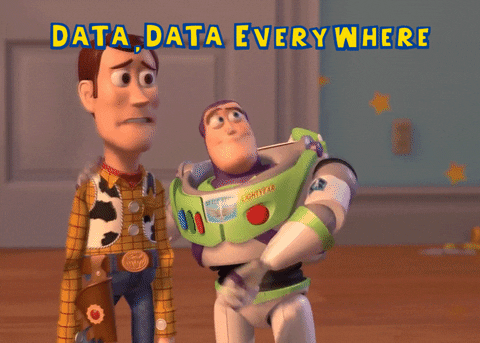Ever wondered how to set up Google Analytics to track each step your website visitors take? Asking why your leads aren’t moving through the funnel the way you’d like? You’re not alone, and we’re here to clear a few things up.
On 24 August, our digital and analytics expert Younes Labbar hosted a masterclass webinar, talking participants through all things conversion.
The session aimed to empower businesses with the skills needed to understand and build effective conversion funnels, covering commonly asked questions and providing step-by-step guides to understanding funnels.
With this knowledge, brands can successfully and accurately track the metrics that mean the most to them, getting an understanding of where consumers are in the funnel and informing marketing strategies going forward.
While the session focused on educational institutions, funnels are vital across all sectors of business, and Younes’ expertise is relevant for anyone looking to build conversion funnels that work.
If you’re in the education sector and you missed the session, you can catch up on-demand here. If you’re just here for the quick tips, keep on reading!
But before we delve into our experts’ top tips, why is it important to have visibility of the funnel?
Conversion funnels help businesses to:
- Analyse the performance of a specific area of your website, such as people arriving at the check-out window or viewing a course page.
- Identify drop-off at a glance. When you set up conversion funnels correctly, you can visualise where your leads are dropping off. With this information at hand, you can plan to re-engage those users and use it to inform your marketing campaigns.
For educational institutions, in particular, conversion funnels help map the sub-steps in their student application journey, all the way from clicking the home page, to booking an Open Day, to enrolment (fingers crossed!)
For businesses, funnels facilitate the ecommerce journey, giving you visibility from the initial click, to adding a product to their cart and then to the final purchase.
What’s more, if you want to take it one step further, you can include data about your campaigns, which will allow you to calculate the return on investment for your paid media spend.
For brands looking to convert more than ever, here’s our guide on how to use conversion funnels successfully.

It all begins with a measurement framework
A measurement framework allows you to map out a complete and comprehensive conversion plan. It’s the first step in getting to the root of what you want to achieve and helps brands question their goals. Ask yourself the following questions to create your measurement framework:
- What do you want to achieve? Include your business objectives and KPIs.
- What data and metrics do you need to measure your success?
Other aspects you’ll need to consider are…
- How are you going to visualise your funnel? Will you use Google Analytics 4 or Data Studio? While it may seem obvious, how the funnel is displayed can be the difference between getting buy-in and not getting buy-in from your team. It will help you show them exactly where customers are dropping off, and where you need to funnel spend to ensure your consumers stay on the path to conversion.
- Testing your campaigns and how your systems are communicating. If data is showing incorrectly, check that you have set up your conversion tracking correctly.
- Implementing tools and systems like Google Tag Manager, Google Data Studio and Google Analytics – all essential tools for conversion tracking.

Get your platforms talking to each other
Often, systems fail to communicate with each other, leading to incorrect funnels and, as a result, misinterpretation of data patterns. How can you fix this?
To fully understand your data, you’ll need to ensure that Google Tag Manager, Google Analytics and Google Data Studio are connected to accurately feed data into one another. Using these platforms together will provide powerful insights and ensure that you never lose track of another customer in your conversion funnel.
Get GA4 (and get it now)
If you’re not already using Google Analytics 4, what are you waiting for? GA4 is the best tool to view each stage of a conversion funnel, and soon it’ll replace Universal Analytics.
GA4 is designed for the future, with integrated AI-powered insights to help you understand how people move through the funnel. As a free tool, it’s a no-brainer when it comes to making the switch. Plus, migration from Universal Analytics to GA4 is easy if you’ve already got a Google Analytics account, as you can transfer data from one to the other for free.
Getting to grips with GA4 now is the smart choice, as it enables your analytics to build up a wealth of historical data. Plus, machine learning will begin to fill in the gaps in data when cookies become obsolete, meaning you’ll never be left with data gaps.
If you’re unsure how to set up Google Analytics, get in touch with us now.
Get buy-in from your team and decision-makers
Not in a position to implement GA4? We’ve all been there – it can sometimes be difficult to get your team to see just how important this tracking tool is and how much of an impact it can have on the bottom line.
To get your team on board, we recommend making your funnel aesthetically pleasing – you can use the explorations menu to do this. It’ll offer pre-designed templates so you can display your funnel with finesse, making it easy for the team to identify any blocks in conversion. Then it’s over to you to dazzle them with your marketing recommendations.
We recommend you do this in your current analytics platform, then send them this blog so they can read all about the power of GA4 and it would improve your brand’s strategy.

Now you’re powered by our expert advice, what’s next?
If you feel confident implementing the tips we’ve shared, then go ahead and build a conversion funnel that catches the attention of everyone!
If you still need additional support and want to develop and optimise your conversion funnel with us, then get in touch so we can recommend tailored advice. And if you’re unsure on how to get your channels talking to each other to ensure accurate measurement and analysis of your data, we can support you with that too.



